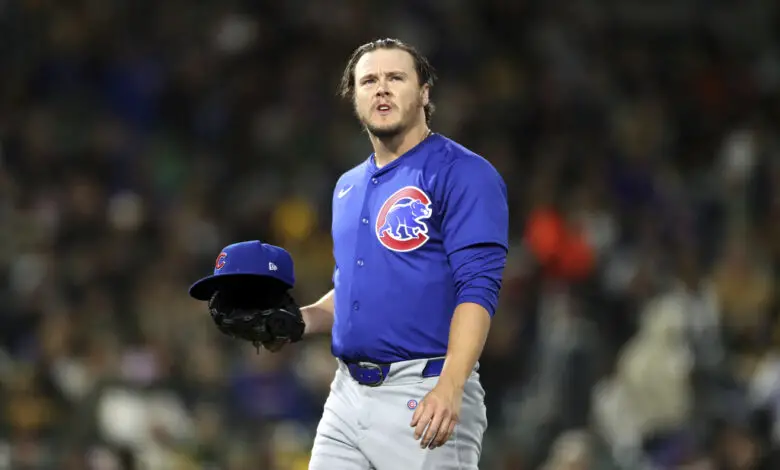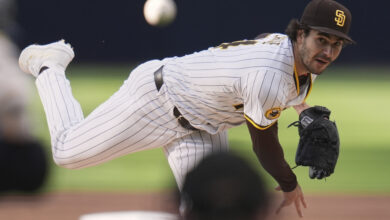
Cubs Have Very Small Pool of Arb-Eligible Players, Raises Appear Nominal
In years past, the Cubs have dealt with a significant number of arbitration-eligible players, which can mean big increases in payroll as high performers near the ends of their rookie deals. Even if this was something I didn’t already understand quite clearly, Cubs chairman Tom Ricketts provided an impromptu lesson in the lobby of the Loews Hotel in the wee hours of Saturday morning a few years back. This was at CubsCon, and we had just finished shooting the breeze with Mike Montgomery when I saw Crawly — who trainers PJ Mainville and Nick Frangella had been side-eyeing for quite a while — beelined it for Ricketts.
Rather than talk about how we learned that team ownership is all about asset appreciation and how former CI writer Ryan Davis‘s piece in Forbes about the Ricketts family ending its typical Saturday morning panel was the “worst piece of shit” ever, let’s get back to arb raises. Not only do the Cubs have just four eligible players, but their projected salaries for 2026 come to roughly $11.5 million in total.
More than half of that comes from Justin Steele, who MLB Trade Rumors’ Matt Swartz projects at a mere $6.55 million. What would otherwise seem like a…steal…is not nearly as much of a bargain considering the lefty may not be able to pitch much, if at all, next season. That said, it’s a pittance relative to his talent. Javier Assad figures to be tendered a deal at just under $2 million, but the other two players aren’t sure things.
While $1.1 million is an easy sell when discussing a proven reliever, Eli Morgan is anything but. His outlier 2024 campaign saw him appear in only 32 games after 61 appearances the previous season. And that 1.93 ERA varies wildly from his other seasons, especially his abbreviated 2025 season that featured only seven appearances and a 12.27 ERA before an elbow issue sidelined him. The Cubs are reluctant to give up on players they acquire via trade, but they could non-tender Morgan rather than giving him a raise.
The last eligible player is Reese McGuire, who could be in line for the same $1.9 million projected for Assad. As good as he was relative to expectations, it’s hard to imagine the Cubs tendering McGuire when they have Carson Kelly under contract and Miguel Amaya back to full health. They won’t pay $2 million to a third-string catcher, particularly when they could use Moisés Ballesteros in an emergency.
Between the nominal arb increases and the money they’ve got falling off the books, the Cubs are currently at an estimated $155 million competitive balance tax payroll for 2026. That’s roughly $89 million under the first penalty threshold, which should give them plenty of flexibility to rebuild a bullpen that will lose at least six contributors to free agency. Chief among those are Brad Keller, Caleb Thielbar, and Drew Pomeranz, all of whom could command significant increases to their 2025 salaries.
Thielbar made the most at $2.75 million, more than Keller ($1.5M) and Pomeranz ($1M) combined, but I doubt a team could land any of them for less than twice as much for next season. Aaron Civale, Willi Castro, Carlos Santana, Taylor Rogers, and Michael Soroka also fall off, though none of them had a significant impact on this season’s team. Some barely cost anything due to the nature of their acquisitions, so their departures will be negligible.
The big bogey is Kyle Tucker, whose $16.5 million salary will have to be reallocated elsewhere as the Cubs look to replace his production. After initial indications that the team was willing to discuss an extension and then to pursue Tucker in free agency if an early deal couldn’t be reached, the narrative has shifted dramatically. Sources have told CI the club does not plan to pursue a deal, even at what will likely be a reduced cost compared to speculation over the summer.
Anything can change, of course, but reports have surfaced in the media over the last few weeks that the Cubs were always comfortable with Tucker being a rental and that they’d never planned to re-sign him in the first place. While I believe the latter is an exaggeration in terms of the “never” part, I do agree that the organization’s opinion shifted as the season went along.
We know for sure the Cubs have room below the pretend salary cap to make some big splashes this winter and we know they have massive revenue streams to support a higher payroll. The only question is whether losing out to the Brewers in both the division and the NLDS will spur them to further outspend their opponents or to be more like Milwaukee by trying to do more with less.

